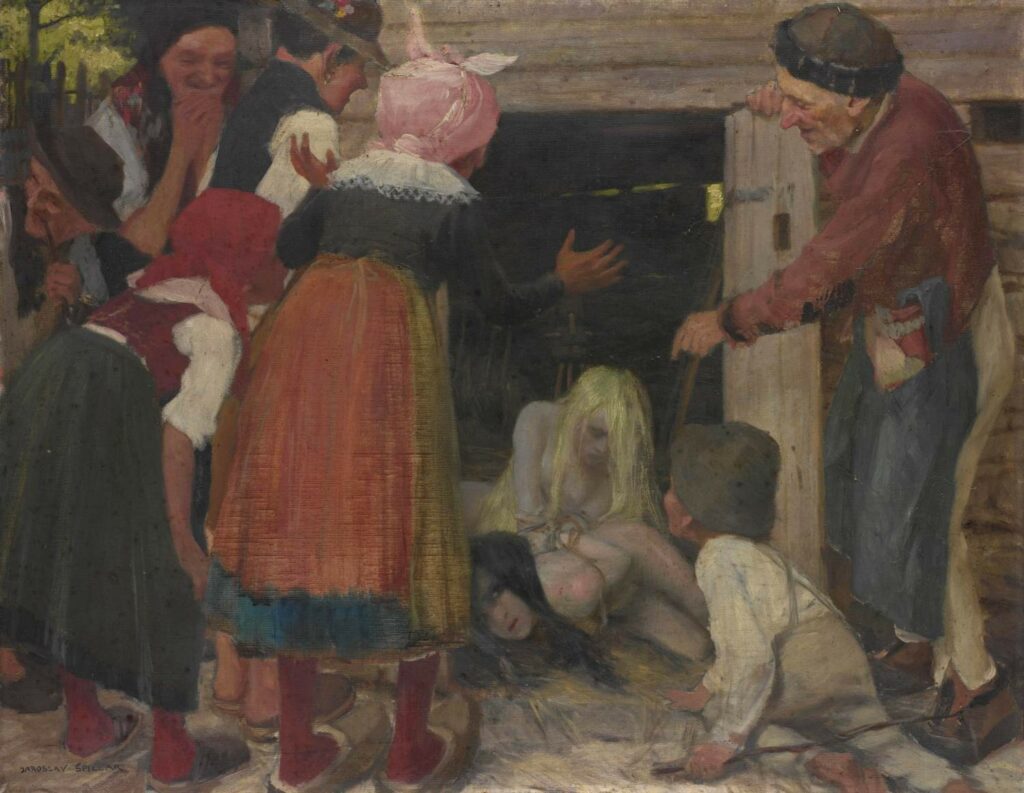Špillar Jaroslav, Lapené lesní žínky – Trapped Forest Nymphs (1901).

I didn’t chose the topic of Mountain and myth by accident or randomly. As far as I remember, mountains have always been the stage for the crazy stories I was making in my head. Children raised by wolves, witches worshipping nature, monsters staring at you in the night when the snow kills the noisiness of the world. Wonderful stories scaring me, but at the same time thrilling the child in me who only craved for adventure and magic. This child in me never died. Today, the educated and passionate adult continues to mix imagination, history and mountains together, and writes stories taking place in the mountains, still stimulated by the mystical atmosphere of mountain’s nights. I grew up to be fascinated with history, and understood a sentence which seemed to obsess me: “History is composed of stories”. Last semester, I intended to the class “Magic and Witch Hunts during Early Modern Era in Europe”, and Czech mountains where part of the hot spots of the massacre. We know that Moravia was very involved with the hunts, and the Czech mountains full of legends and superstitions, were the heart of the massacre. And this was exactly what I saw in the painting of Jaroslav Spillar.
The painting, named in English “Trapped Forest Nymphs” (painted in 1901), is depicting such a scene of the ancient time, when women were tortured, humiliated and sequestrated to confess their satanic crimes, even though no proves were relevant. This hunt, where thousands of men and women died for a common belief and fear, was right there, in Jesenik, in Bohemia, in German lands, the Alps, the mountains of Auvergne, in Spain or in the Scottish Highlands. The dirt was marked with their blood and those horrible scary stories.
It is something thrilling to think about it when I’m hiking in the mountains. Doesn’t it feel unreal? Isn’t it hard to imagine that it happened right here, under your feet? This painting is depicting so well this weird feeling of unreality, illustrating those accurate scenes which sound like legends to our ears. A story told to scare children, a story told in books about the past, a story told through a painting. Spillar depicted the tough and hard reality of these events: innocent women laying in the mud and insulted by common people, dehumanized and calling the spectator for help through their look. I can almost hear her telling me, “do you enjoy the stories which were told to you? For those tales you hear were our reality”.
Imagination is yet the only key we have to physically reconnect with the past. I want to use this idea in the mountains, to walk in the dark forest and look at the deep valley bellow, to listen at the night sounds and animal lives. For this is what inspired stories and superstitions. I want to experience the ancient feelings linked to a landscape which was already there and intimidating centuries ago, and understand how the mountains became the stage of old tales, as it was the stage of my own tales.
Alia.
2 responses to ““Trapped Forest Nymphs”, an Early Modern Tale – Gallery Visit.”
Great! I’m glad that the gallery visit actually contributed to your own focus and method – I especially appreciate the last two paragraphs. Some keywords that could help you narrow your research is the sacred and the profane (Eliade), and re-enchantment (which is a process of returning the “magical” back to the real). Thanks and keep up the good work!
Thank you very much! I indeed got very inspired by this painting, thanks for the opportunity 🙂